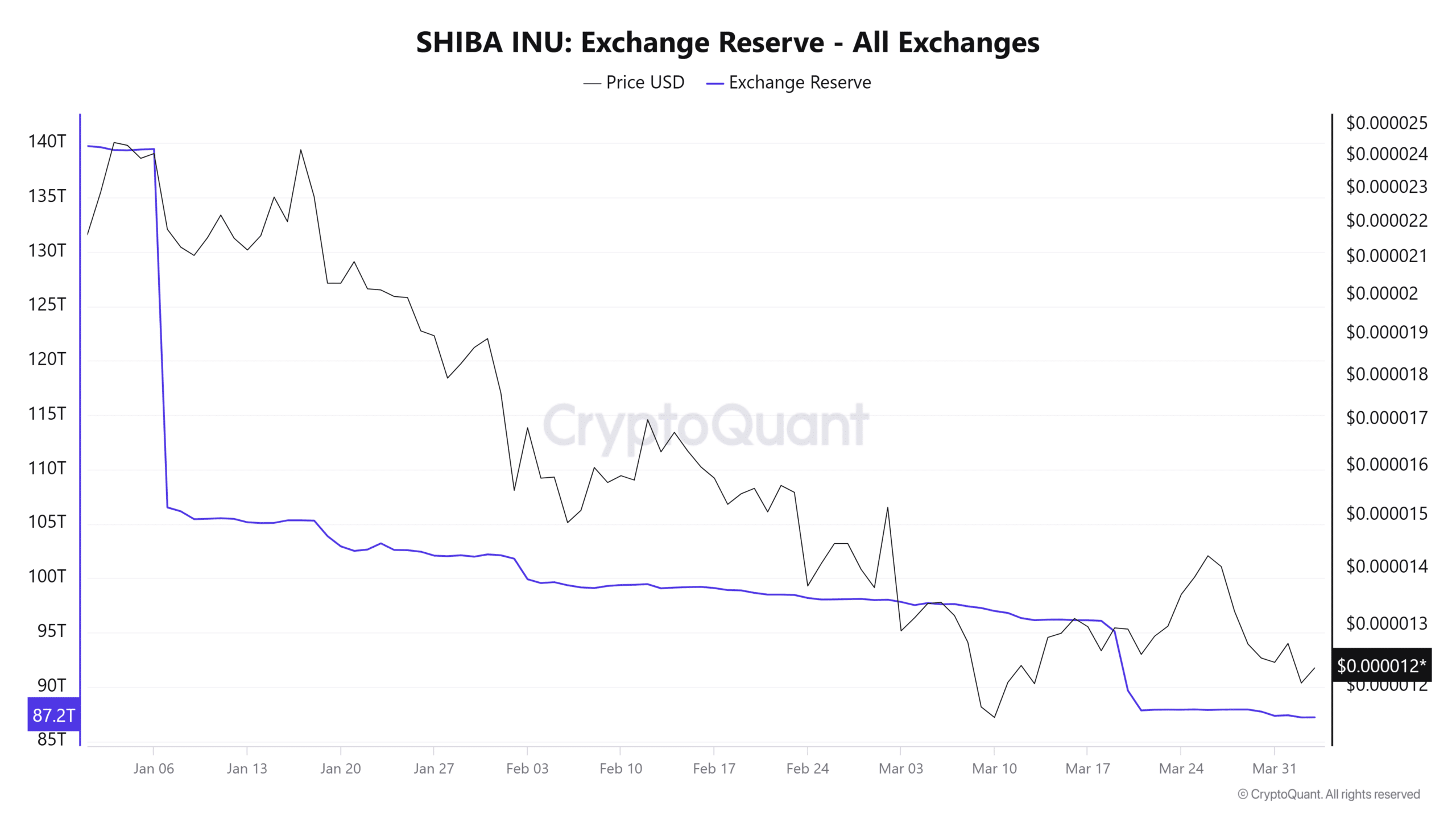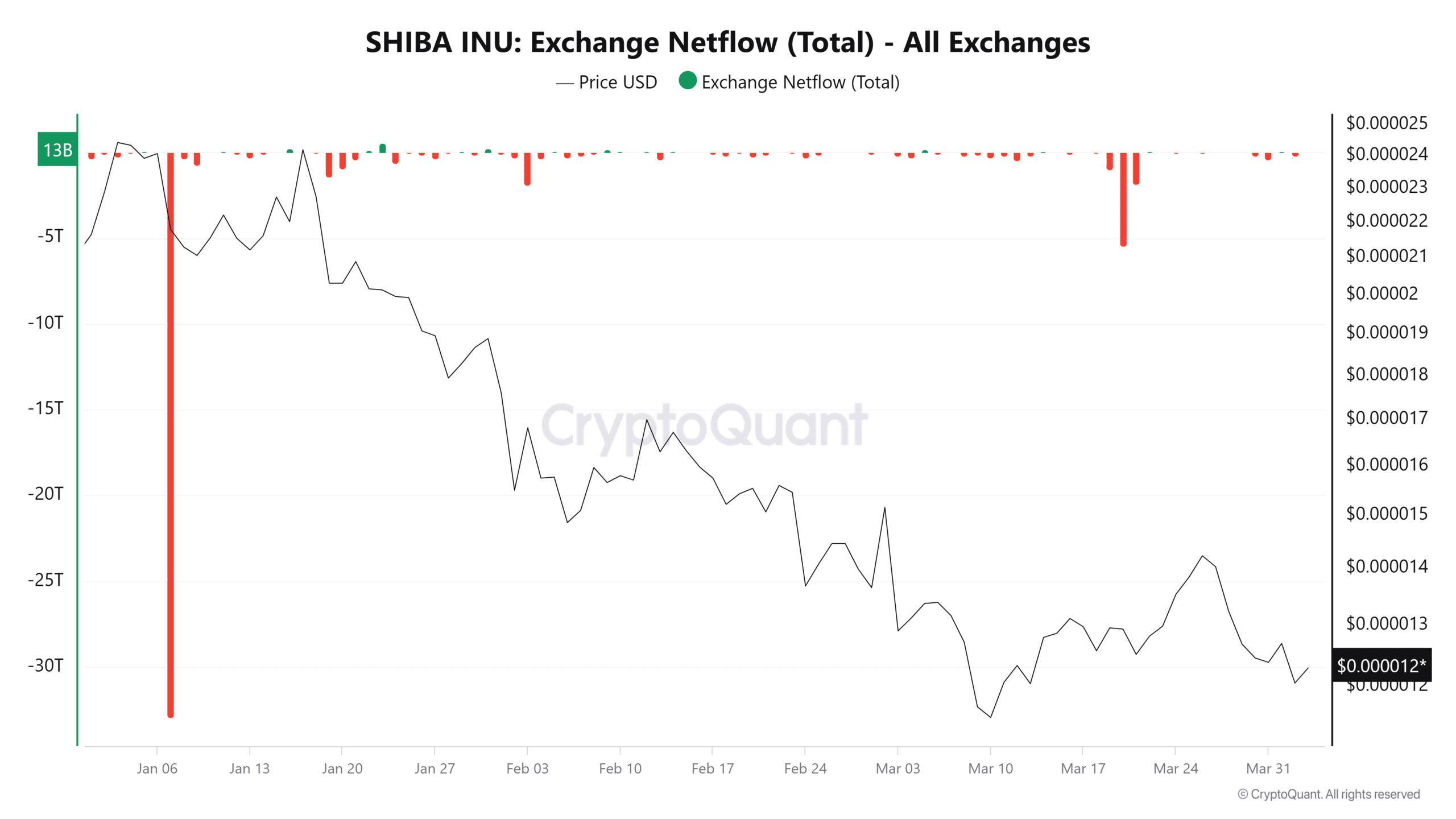- Long-term SHIB holders rose 7.5%, showing growing investor conviction amid falling prices.
- Large holder netflows reversed sharply negative, down 212% over the quarter.
Shiba Inu’s [SHIB] investor ecosystem has undergone a dramatic transformation in Q1 2025.
According to IntoTheBlock, long-term holders now command over 80% of the total SHIB supply. Seemingly, it suggests a clear departure from the memecoin’s early reliance on short-term speculative trading.

Source: IntoTheBlock
Diamond hands take the throne
In fact, a comprehensive analysis of wallet behavior shows consistent growth in SHIB holdings by long-term investors—those who have held for more than a year.


Source: IntoTheBlock
SHIB whales increased their holdings by 7.5% in Q1 2025, despite a 45% price drop. Wallet data shows balances rose from 732 trillion to 787 trillion tokens between the 1st of January and the 2nd of April.
In contrast, mid-term holders cut positions by 18%. The exodus was even more pronounced among short-term traders, whose holdings plunged by 43%, shrinking from 36 trillion to just under 21 trillion SHIB.
Where did all the SHIB go?
Supporting this behavioral pivot, data from CryptoQuant reveals that SHIB exchange reserves dropped 37.6%, from 139.7 trillion to 87.2 trillion in the same period.


Source: CryptoQuant
This sharp outflow suggests tightening sell-side liquidity, typically seen as bullish in volatile conditions.
Yet, despite this trend, SHIB’s price continued to fall, suggesting the influence of larger market forces or insufficient demand.
A whale of a plot twist
Further complicating the narrative, IntoTheBlock’s large holder netflow data reveals conflicting behavior.


Source: IntoTheBlock
On the 6th and the 7th of January, inflows soared as over 33 trillion Shiba Inu entered exchanges.
Netflows then plunged by more than 212% through February and March. Yet SHIB’s price held steady, hinting that whale moves no longer dictate the market.
Despite this massive swing in large holder behavior, SHIB’s price remained mostly stable during high-volume events.
This decoupling suggests that whale movements may no longer hold the sway they once did—or that other factors, like retail sentiment or broader market conditions, are taking precedence.
Retail sentiment and broader conditions appear to override big-player influence, suggesting a more mature market. Speculative trading has slowed, while accumulation has strengthened.
Buy the dip or exit the ship?
CryptoQuant data shows two major netflow spikes.


Source: CryptoQuant
For example, on the 7th of January, 32.94 trillion SHIB flowed into exchanges, then prices slid to $0.0000218. As well as, on the 2nd of March, a 33.84 trillion SHIB influx preceded a drop to $0.00001516.
These deposits often signal large sell-offs, suggesting strategic repositioning by major holders. Despite these events, exchange reserves shrank, indicating whales’ sales were overshadowed by ongoing withdrawals.
The calm before the climb?
SHIB’s daily chart, despite an 18% drop, remains above key support. On-balance volume shows growing accumulation.
Holding durations are rising, exchange reserves are shrinking, and netflows point to structural change.
Long-term holders now dominate supply, while speculative players wane. Though price has struggled in early 2025, behavioral data suggests strengthening confidence.
If accumulation persists and exchange liquidity tightens, Shiba Inu could see more stable market behavior soon.







